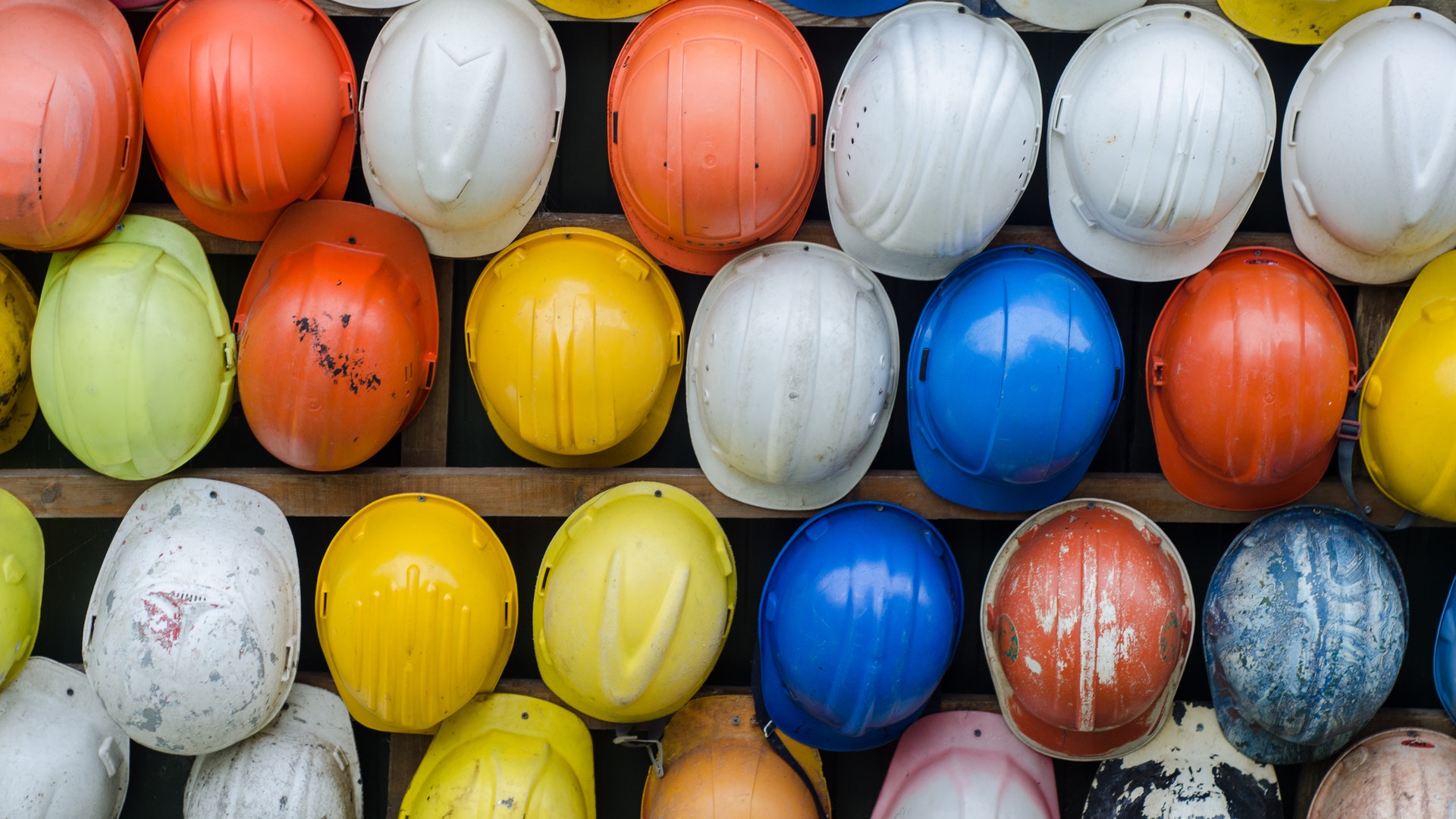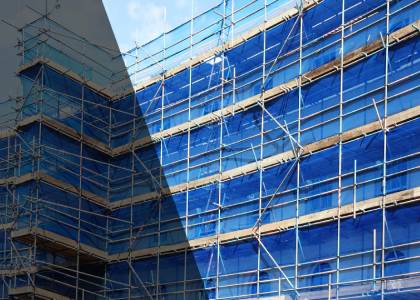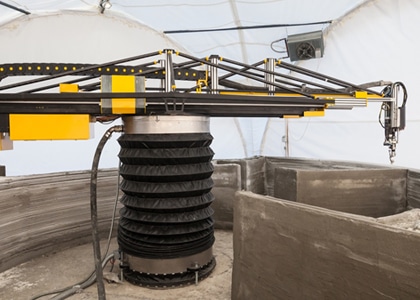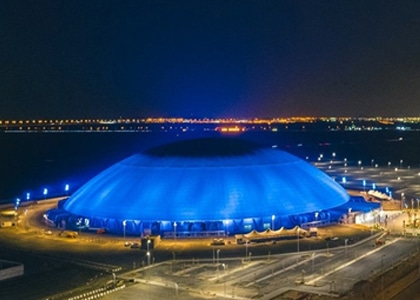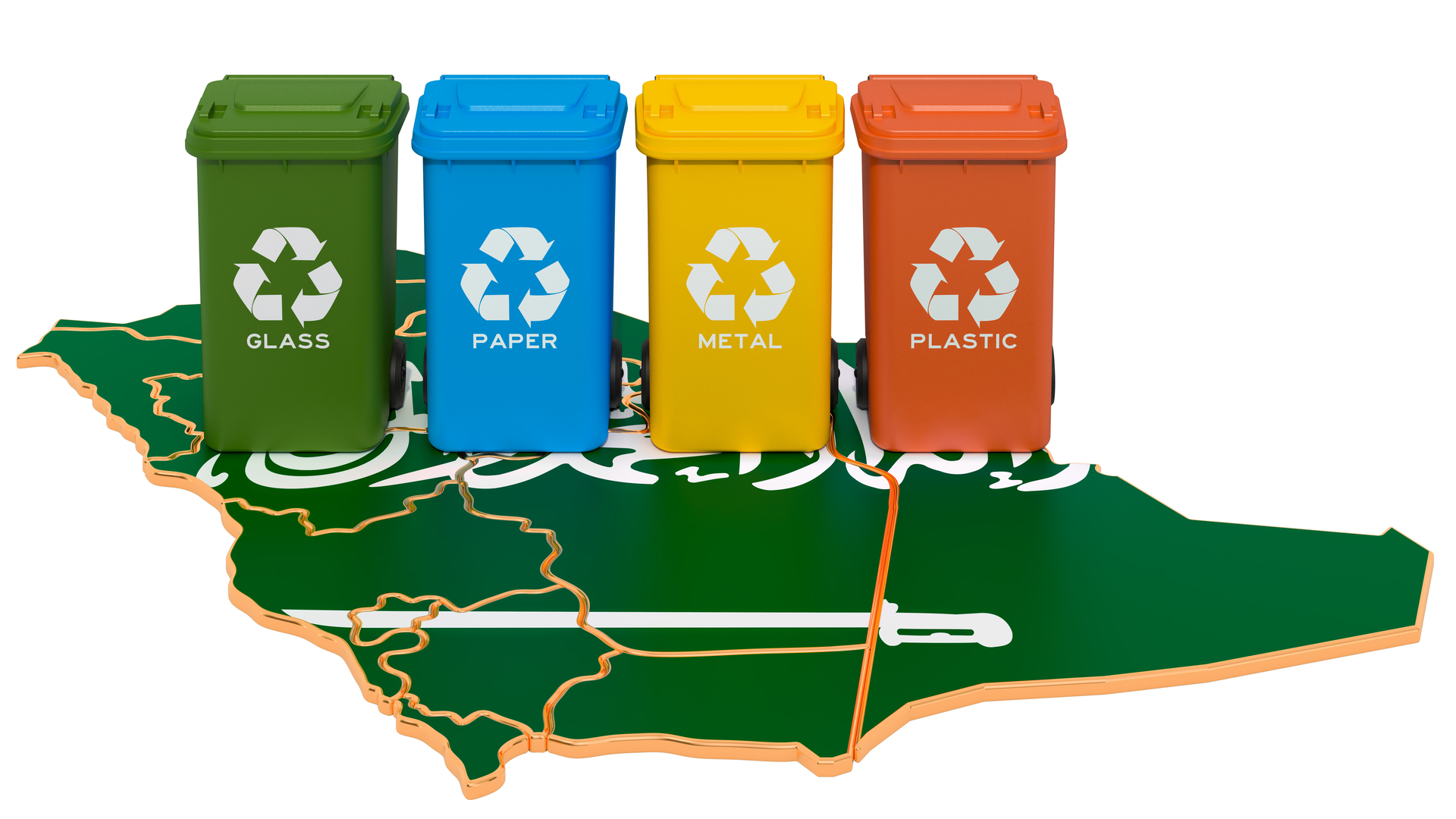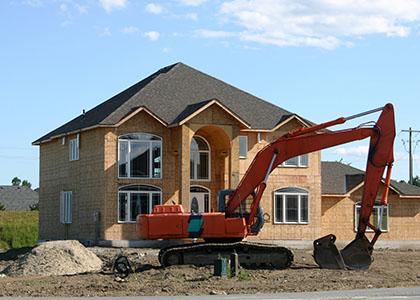Home / Blog / International Best Practices On Site Safety
Article Summary
In the construction industry around the world, it’s important to follow best practices on construction safety, as these are the first steps for protecting workers, the environment, and the general public from heavy and dangerous equipment, pollutant materials, and accidents.
International best practices in construction safety set globally applicable standards for keeping site operations safe and free. They also cover a variety of general and specific areas to ensure the complete protection of a site and its staff. A company that specializes in construction safety will also cover areas such as protection from falling objects, falls, emergency action, fire safety, and much more.
The construction industry is known for the highest hazard rates in industrial work, and with the rise in construction projects in Saudi Arabia, implementing best practices in construction safety can help the kingdom meet its wider objectives for socioeconomic development while enhancing its global reputation. For example, employing digital technologies reduces error or emergency-notification time, and increases the speed of response, preventing accidents and increasing overall construction site safety.
In this regard, innovative technology focused on construction safety has the potential to improve complete site planning and real-time hazard management. Through this, construction companies can better implement safety practices among staff and management, as well as ultimately reduce operating costs.
Index
- INTERNATIONAL BEST PRACTICES ON SITE SAFETY
- FOLLOWING BEST PRACTICES
- CONSTRUCTION SAFETY TRAINING
- CONSTRUCTION SAFETY, WASTE DISPOSAL, AND THE ENVIRONMENT
- WORKER PROTECTION AND FORMS OF REGULATION
- NEW SOLUTIONS FOR SITE MAINTENANCE AND REGULAR SAFETY CHECKS
- INVEST IN SAFETY, REDUCE COSTS, AND SAVE LIVES
International Best Practices on Site Safety
In the construction industry around the world, it’s important to follow best practices on construction safety as these are the first steps for protecting workers, the environment, and the general public from heavy and dangerous equipment, pollutant materials, and accidents.
International best practices in construction safety set globally applicable standards for keeping site operations safe and free from:
International best practices for construction safety cover a variety of general and specific areas to ensure the complete protection of a site and its staff. These protocols set the foundation for occupational health specific to the project and procedures of a particular site, its equipment and materials, and its unique layout.
Following Best Practices
There is value in following in the steps of regions with the most advanced practices and safety maintenance success rates because the construction industry across the globe oftentimes faces similar challenges.
It’s also important to have standardized practices in construction safety for several reasons, including the way natural resources are shared.
Read on to learn about key areas of construction safety, why it’s an important investment and some innovative solutions.
Construction Safety Training
A company that specializes in construction safety will also cover areas such as protection from falling objects, falls, emergency action, fire safety, and much more. Working on a construction site also often means performing focused work from considerable heights, and specialized safety training is needed in order to protect oneself from dangerous and life-threatening falls.
Following on safety protocols ensures protection on the following three fronts:

- Your employees: One of the first lines of defense for protection against accidents that put human life at risk is hiring trained expertise for construction safety. Trained experts set the foundation for on-the-job safety training and ensure those onsite follow construction safety protocols.
- Your Consultants: Construction company owners often hire a construction safety company to provide staff with the right training in safety procedures. Construction is specialized labor, and different procedures can apply to one site at once. An agency that specializes in construction safety can cater to specific and diverse needs for different projects.
- Your Site: A construction site is a busy place, with different aspects of a structure coming up simultaneously, for both, functionality and in order to meet timelines. For example, masonry work could be happening alongside cranes, hoists lifting, and the placement of heavy materials. Construction safety training and following protocols ensure workers know how to focus on their specific tasks while being mindful of work taking place in their periphery.
Emergency Protocols
Sometimes, however, accidents take place, and in order to minimize their effect and save lives in adverse situations, emergency protocols need to already be in place so workers know how to react appropriately and return to safety. Outsourcing your safety training to a company that specializes in construction safety allows your business and workers to benefit from prioritized and targeted construction safety training.
Construction Safety, Waste Disposal, and the Environment

Climate change is real and serious, and the world is beginning to take note with an international response that’s markedly louder. Now no longer just the subject area of environmentalists and wildlife advocates, there is a greater awareness of everyday changes in life, from an increase in smog to drastic weather changes.
Some studies indicate that construction has contributed to 50% of climate change and 50% of landfill waste. It’s important to recognize that construction also plays a role in adverse environmental impact and that it is not the only industry that is responsible for the unchecked use of natural resources and emptying of hazardous emissions into the atmosphere.
- Sustainable practices
Including eco-friendly building design and green construction sites under the purview of construction, safety is a key and needed way to reduce the environmental impact of this important industry. Construction companies can opt for reused or naturally sourced materials, as these produce a smaller carbon footprint during processing.
- The durability of construction materials
They can also consult with design teams that specialize in materials that enable greater durability of a building structure, as this leads to fewer maintenance repair needs, enabling the conservation of energy and a reduction in waste production.
- Best use of available resources
Optimizing natural light and renewable energy sources, like solar panels, can also go a long way as well in reducing the environmental impact of buildings – as well as reducing costs – once they are ready for occupation and use.
- Disposal of waste materials
Materials safety, which relates also to its production, processing, storage, and disposal, needs to be seen as a key aspect of construction safety, followed by implementing international best practices to reduce environmental impact.

A broader view of construction safety will allow companies to not only protect workers’ occupational health but also the world’s shared environment. While major strides need to be taken within the industry for construction safety, increased attention to safety best practices can make a needed and positive contribution to reducing environmental impact and protecting human life.
Worker Protection and Forms of Regulation
In addition to specialized safety training, workers on construction sites need to be provided with the right clothing that ensures their physical safety, such as hard hats, metal-toed boots, and gloves for gripping. Construction company owners and managers take the responsibility of providing employees with access to safety attire, ensuring that they follow international safety best practices.
- The impact of accidents
These are basic items of construction safety on a project site, and there is much more that companies can do to meet international best practices for worker protection. Some statistics show that globally workplace injuries in construction lead to 31 days of missed work per year. This is a significant toll on both employees with respect to the quality of work experience and job security, as well as companies having to bear avoidable medical expenses and increased project timelines.
- Worker protection
Refers to occupational health and safety in construction, and includes:
-
- reasonably timed shifts
- regular breaks
- adequate time off
- length of the workday
- scheduled breaks
- weekly time off
- leave
- Construction safety practices
Work on a construction site is both technical and labor-intensive, so construction safety practices are indispensable. Ensuring the following steps goes a long way in delivering on construction safety practices.
-
- Adhering to labor laws
Over-tired staff leads to work errors, inefficiency, and potentially dangerous mishaps. Specified work timings help to hold both a company and its staff accountable to construction safety standards. Countries usually have federal, state, and municipal laws regulating safety and site approval processes, so a company’s construction safety best practices can dovetail labor laws to ensure worker protection.
-
- Adhering to safety regulation and implementation practices
In cases where countries leave safety regulation and implementation practices up to the private sector, this is an opportunity for construction companies to set international best practices standards.
-
- Compliance
As a construction company, it’s important to recognize that such compliance procedures not only ensure the safety of workers but also protect businesses.
-
- Implementing best practices
The construction industry is known for the highest hazard rates in industrial work, and with the rise in construction projects in Saudi Arabia, implementing best practices in construction safety can help the kingdom to meet its wider objectives for socioeconomic development and enhance its global reputation in the industry.
-
- Adhering to international regulation
With construction company contracts that meet widely used international regulations, this is a major step forward toward institutionalizing a safety culture in construction in Saudi Arabia.
-
- Health insurance plans
Also, it’s recommended that construction companies provide workers with a good health insurance plan and encourage them to use it. Including physiotherapy for construction workers in their health insurance plans, for example, is an added value as this treatment helps to prevent and repair musculoskeletal injury and pain resulting from work-related activities.
-
- Support from management
Working as a builder in the construction industry also involves pressure to meet project deadlines, work with heavy materials, and sometimes, exposure to hazardous materials, all the while maintaining one’s own, and others’, safety. This is a considerable amount of multitasking and for construction workers to meet this responsibility they need to feel supported by management and the company.
This leads to good mental health among staff, fewer worries, and increased morale, allowing for greater focus and alertness while on the job. As a company owner, not only does providing employees with a good healthcare package lead to a greater and better quality of productivity, it means boosting the company’s reputation as one that promotes quality-work experiences by implementing construction safety best practices.
New Solutions for Site Maintenance and Regular Safety Checks

Innovative Technology
The increased use of digital applications across all business sectors also has immense potential for improving international construction safety best practices in diverse areas of site management and operations.
- Digitalization of processes
Digitization can help to streamline key safety processes and functions to ensure the health and security of construction workers. For example, digital technology can be used for onsite inspection in construction safety as well as for increase productivity.
- Use of drones
With the input of data into a construction safety checking application, accurate reports can be produced for submission to compliance regulation bodies. Such data can be collected using drone technology, reducing the possibility of human error.
- Mobile reporting
Mobile reporting is another form of digitized construction safety that reduces error or emergency notification time, and increases the speed of response times, preventing accidents and increasing overall construction site safety. Mobile reporting allows for the collection and recording of real-time data and information and the ability to relay important construction safety-related messages with greater ease and speed.
- Motion sensors
Applications for motion sensors with proximity warnings can alert workers of the possibility of falling objects, geographic applications can assist with conducting feasibility studies that also consider construction worker safety.
- Training and workshops
Then there is the human side and the challenge of training workers on new systems and procedures and transitioning these into daily operations. It is important to meet these challenges, however, as the use of artificial intelligence can provide better oversight on all systems from one location, and alert one to potential breeches with quicker response times to meet construction safety goals.
Together, digital technology focused on construction safety has the potential to improve complete site planning and real-time hazard management so that construction companies can better implement safety practices and develop a safety culture among staff and management. One of the challenges with a shift to digitization is phasing out older hardware and processes, and upgrading to data-based technologies.
Invest in Safety, Reduce Costs, and Save Lives

The right health and safety compliance regulations in place contribute to smoother and more efficient downstream operations in construction. Without these in place, unexpected costs can arise due to emergency spending to repair site machinery, cover legal fees from worker injury, or fines for failing to meet compliance regulations.
Complete construction site safety includes the following areas:
- hazards
- preventing serious mishaps
- executing protocols, in case of an accident
- workers
- equipment
- machinery
- storage facilities
- site
- training of staff
Protection of human and material assets
Investing in the above will help ensure that dangerous accidents can be prevented before they happen. Including health and safety best practices in day-to-day operations across the construction sector is key to protecting company assets, staff, and is integral to financial management.
- Cost-benefit analysis
A cost-benefit analysis can help construction companies understand the value of construction safety for the long-term operation of their businesses, and realize that construction safety is not an unnecessary expense. Best practices in construction safety on-site and a clean record also amount to regularly low insurance rates.
Running a safe construction company means greatly improved profit margins and boosting the company’s reputation in the industry.
For more information on site safety and construction best practices get in touch with SSF. A leading manufacturer of scaffolding in Saudi Arabia, we provide safe and durable structural systems for construction, renovation, and maintenance work.
